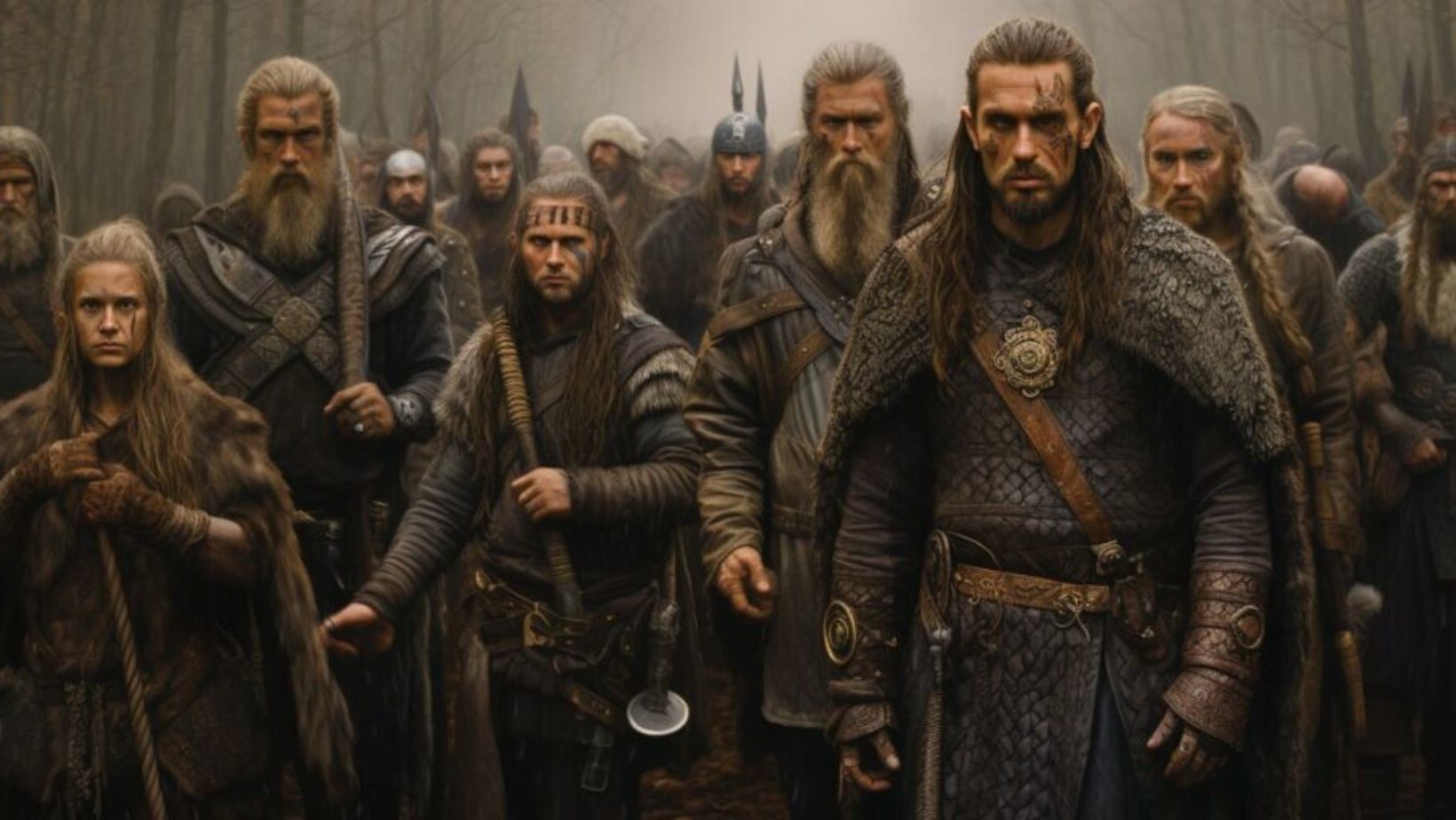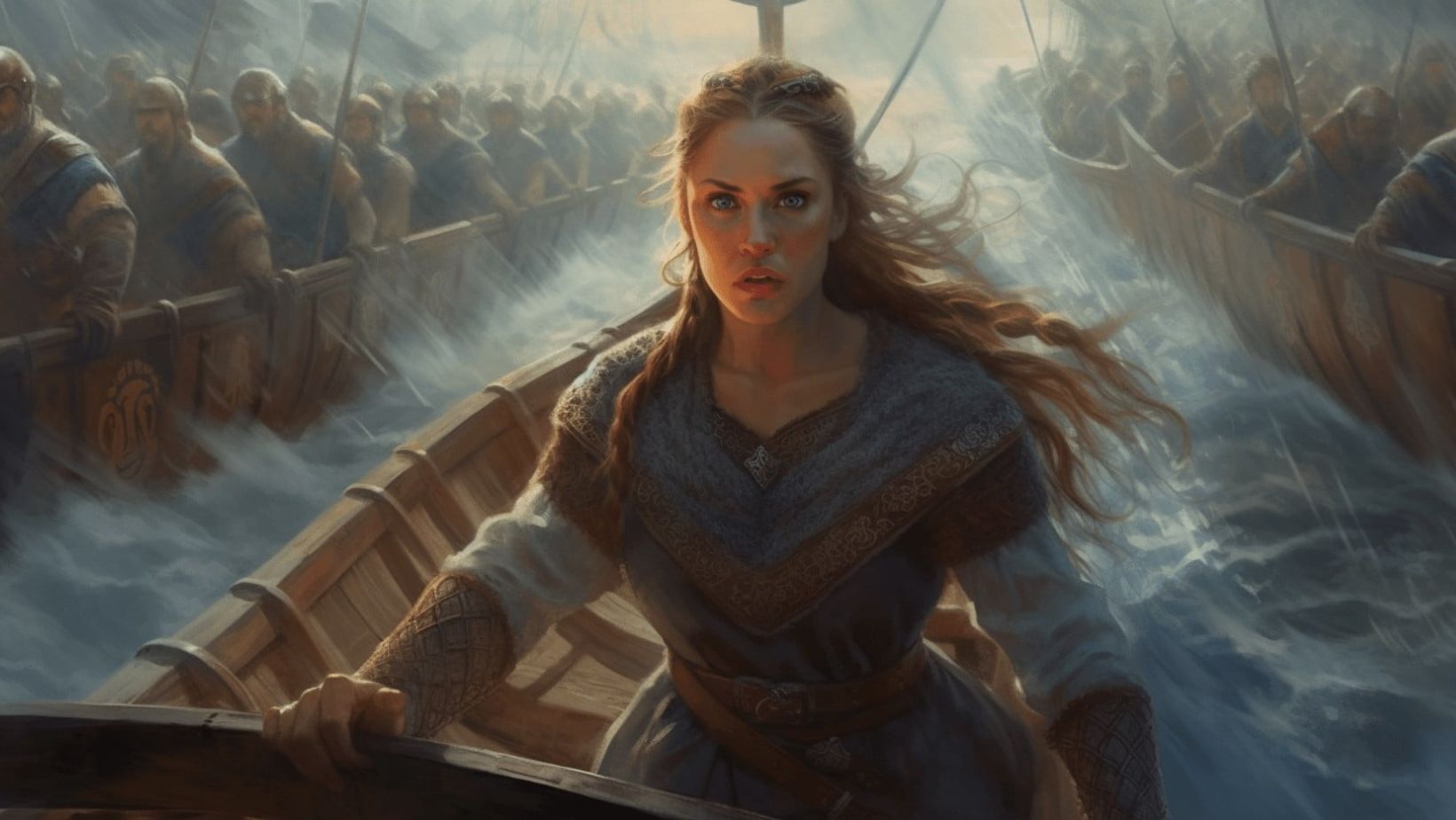Women in Viking society played vital roles that often go unnoticed in popular narratives. They were not just homemakers; they were leaders, warriors, and skilled artisans. Understanding their significance helps us appreciate the complexity of Viking culture. By exploring their contributions, we can challenge stereotypes and recognize the powerful influence women had in shaping their communities. From managing households to participating in trade, Viking women were essential to the fabric of society. Join us as we delve into the diverse roles and profound impact of women in the Viking Age. Their stories deserve to be told!
Historical Context of Viking Society: Women in Viking

The Viking Age spanned from the late 8th century to the early 11th century. During this time, Norse seafarers explored, raided, and settled across Europe and beyond. This era was marked by significant cultural exchanges and developments in trade, warfare, and exploration.
Viking society was largely agrarian and organized into small communities. Each community was typically led by a chieftain, supported by a council of elders. Social hierarchy existed, with nobles, freemen, and thralls (slaves) forming distinct classes.
Family played a central role in Viking life. Women were crucial to maintaining households, raising children, and managing resources. Marriages often served to forge alliances and strengthen ties between families. These dynamics laid the foundation for Viking society, where both men and women contributed to the community’s survival and success. Understanding this context helps highlight the multifaceted roles women played during this transformative period.
Roles of Women in Daily Life: Women in Viking
In Viking society, women were central to daily life and household management. They handled domestic responsibilities, including cooking, cleaning, and child-rearing. Women ensured that the household ran smoothly, often making decisions about family affairs. Their role was crucial for the survival and well-being of the family.
Agriculture was another important aspect of women’s daily lives. Many women worked alongside men in the fields, planting and harvesting crops. They cultivated grains like barley and rye, which were essential for food production.
Textile production was a significant responsibility for women as well. They spun wool and flax into yarn, then wove it into fabric for clothing and household items. This skill was not only vital for family needs but also contributed to trade.
Through these daily activities, women in Viking society demonstrated resilience and resourcefulness. Their contributions were indispensable, shaping both the economy and culture of their communities. Recognizing their roles helps us understand the complexity of Viking society and the important position women held within it.
Women as Leaders and Rulers: Women in Viking

Women in Viking society were not just homemakers; some held significant power and influence as leaders and rulers. Notable figures like Lagertha and Freydis Eiriksdottir are examples of women who defied traditional gender roles. Lagertha, a legendary shieldmaiden, is said to have fought alongside men and even became a leader of her people. Freydis, known for her fierce spirit, played a vital role in Viking exploration and settlement in North America.
Female chieftains and queens were instrumental in maintaining social order and political alliances. They often managed estates, made strategic decisions, and led their communities during conflicts. In some cases, women inherited power through family lineage, ensuring that their bloodlines continued to shape Viking leadership.
These women contributed to military campaigns and diplomacy, demonstrating that they were more than mere figures in the background. Their involvement in governance and leadership challenges the stereotype of Viking women as solely domestic figures. By examining these powerful women, we gain a deeper understanding of the multifaceted roles that women played in Viking society.
Warrior Women: The Shieldmaidens
The concept of shieldmaidens is a prominent theme in Viking lore. These women are often depicted as fierce warriors who fought alongside their male counterparts in battles. Sagas describe shieldmaidens as skilled fighters, donning armor and wielding weapons such as swords and shields. Their portrayal suggests that women could take on roles traditionally reserved for men.
Historical accounts support the idea that some women participated in combat. The sagas, while embellished, mention notable figures like Lagertha, who led troops into battle. Archaeological evidence further strengthens this claim. Graves of women have been discovered containing weapons, indicating that they may have been warriors.
However, the reality of shieldmaidens is complex. Some scholars debate whether these accounts are mythological exaggerations or reflect actual practices. The existence of shieldmaidens challenges traditional gender roles in Viking society. It highlights the possibility of women’s active involvement in warfare and leadership during the Viking Age.
Religious and Spiritual Roles: Women in Viking
Women played vital roles as priestesses in Viking religious practices. These priestesses were often responsible for leading rituals and ceremonies dedicated to various gods. They facilitated communication between the community and the divine, ensuring that the gods’ favor was sought for harvests, health, and protection. Their leadership in these spiritual activities emphasized their importance in Viking society.
In pagan rituals, women were central figures during key ceremonies, especially those related to fertility and seasonal changes. They participated in rites that honored the earth, seeking blessings for crops and livestock. This involvement underscored their connection to the land and its fertility. Their roles in these rituals helped reinforce their status as nurturers and caretakers of the community.
Norse mythology also highlights the significance of female figures and goddesses. Deities like Freyja and Frigg symbolize love, war, and fertility, representing qualities that were revered in Viking culture. These goddesses served as role models, inspiring women to embody similar traits. Their stories reflect the appreciation for female power and influence in both mythology and everyday life.
Marriage and Family Dynamics: Women in Viking
Marriage in Viking society was often strategic, serving to strengthen alliances between families. Women played a crucial role in these arrangements, as marriages were typically negotiated by their families. While love was not the primary concern, many women found ways to express affection within these unions. The marriage contract often included terms that specified the woman’s rights and responsibilities.
In Viking culture, women were expected to manage the household and contribute to family welfare. They took charge of domestic duties, ensuring the home was well-maintained and that resources were properly allocated. This role was vital, as a well-run household contributed to the family’s status and success. Women also had the right to inherit property, providing them with some economic power.
Parenting was seen as a shared responsibility, but women were primarily responsible for early childhood education. They taught children essential skills like weaving, cooking, and farming. Boys were often trained in combat and leadership, while girls learned domestic skills. This early education shaped the next generation’s values and ensured the continuation of Viking traditions.
Economic Contributions: Women in Viking
Women in Viking society played vital roles in trade and commerce. They were often involved in managing local markets and bartering goods. Many women produced textiles, pottery, and food items for sale or trade. This participation allowed them to contribute to their family’s economic stability and the broader community.
Inheritance laws in Viking culture offered women significant rights. Women could inherit property from their fathers or husbands, which gave them a degree of financial independence. This inheritance allowed them to manage and maintain their estates, even if their husbands were away. Furthermore, women could bequeath their property to their children, ensuring their family’s wealth and status were preserved.
Property rights varied by region but were generally respected. Women could own land, which was not common in many other contemporary societies. This ownership empowered women economically, allowing them to engage in trade and secure their futures. Their involvement in the economy was essential for the survival and prosperity of Viking communities.
Artistic Expressions and Cultural Contributions
Women in Viking society significantly influenced arts and crafts. They were skilled in textile production, weaving intricate patterns into clothing and tapestries. Many women also created pottery, jewelry, and other decorative items. Their craftsmanship played a crucial role in both everyday life and ceremonial occasions.
Storytelling was another area where women excelled. They often served as oral historians, passing down myths, legends, and sagas to younger generations. These stories were vital in preserving Viking culture and identity. Women’s narratives provided insights into societal values, beliefs, and historical events.
In addition to oral traditions, women participated in writing sagas and poetry. Although most written records were created by men, some women contributed to this literary heritage. Their works highlighted the experiences and perspectives of women in Viking society. This blending of arts and storytelling allowed women to shape the cultural landscape, ensuring their voices were heard in a predominantly male-dominated sphere.
Overall, women’s artistic expressions and cultural contributions were essential in enriching Viking heritage. Their influence extended beyond mere crafts, impacting social structures and community bonds.
Legacy of Viking Women

The legacy of Viking women has shaped modern perceptions of gender roles in history. Their involvement in various aspects of society challenges traditional views that often portray women as passive. Instead, Viking women are seen as active participants in warfare, trade, and leadership. This recognition has sparked interest in re-evaluating the roles of women throughout history.
In contemporary culture, Viking women continue to inspire. Popular media, such as television shows and films, often highlight their strength and independence. Characters based on historical figures, like Lagertha from “Vikings,” showcase women as warriors and leaders, influencing public perceptions. This representation fosters discussions about women’s empowerment and equality.
Furthermore, the legacy of Viking women encourages modern audiences to explore their contributions beyond traditional narratives. Academic research and literature increasingly acknowledge their roles in shaping Viking society. This shift in focus promotes a more balanced understanding of history, emphasizing the importance of women’s contributions. Overall, the legacy of Viking women remains relevant, influencing both historical scholarship and contemporary cultural expressions.
Conclusion: Women in Viking
Women in Viking society played multifaceted roles that extended far beyond traditional expectations. They managed households, participated in agriculture, and even took on leadership positions. Shieldmaidens and priestesses exemplified their active engagement in warfare and spirituality. The legacy of Viking women is enduring, influencing contemporary discussions about gender roles and empowerment. Their contributions challenge the often simplistic narratives of history, highlighting the importance of recognizing women’s influence in shaping societies. As we explore their stories, we gain a deeper understanding of the complexities of Viking culture and the essential roles women played within it.
FAQs
Did Viking women have rights in marriage?
Yes, Viking women had significant rights within marriage. They could negotiate marriage terms, own property, and initiate divorce. Women maintained control over their dowries, which could be reclaimed in the event of separation.
How did Viking women contribute to warfare?
Some Viking women, known as shieldmaidens, fought alongside men in battles. While not all women engaged in combat, their presence in folklore and sagas suggests they played a role in warfare, whether as warriors or as supporters.
What were the social status levels of Viking women?
The social status of Viking women varied based on their family background and marital connections. Wealthy women could wield significant influence, while those from lower-status backgrounds had more limited roles but still contributed to society in various ways.
Were there any famous Viking women?
Yes, several notable Viking women made their mark in history, including Lagertha, a legendary shieldmaiden, and Freydis Eiríksdóttir, known for her adventures in Vinland. These figures exemplify the various ways women influenced Viking society.
How are Viking women depicted in modern media?
Viking women are increasingly portrayed as strong, independent figures in modern media. Television shows and films often highlight their roles in warfare, leadership, and spirituality, contributing to a broader understanding of women’s impact in Viking culture.

